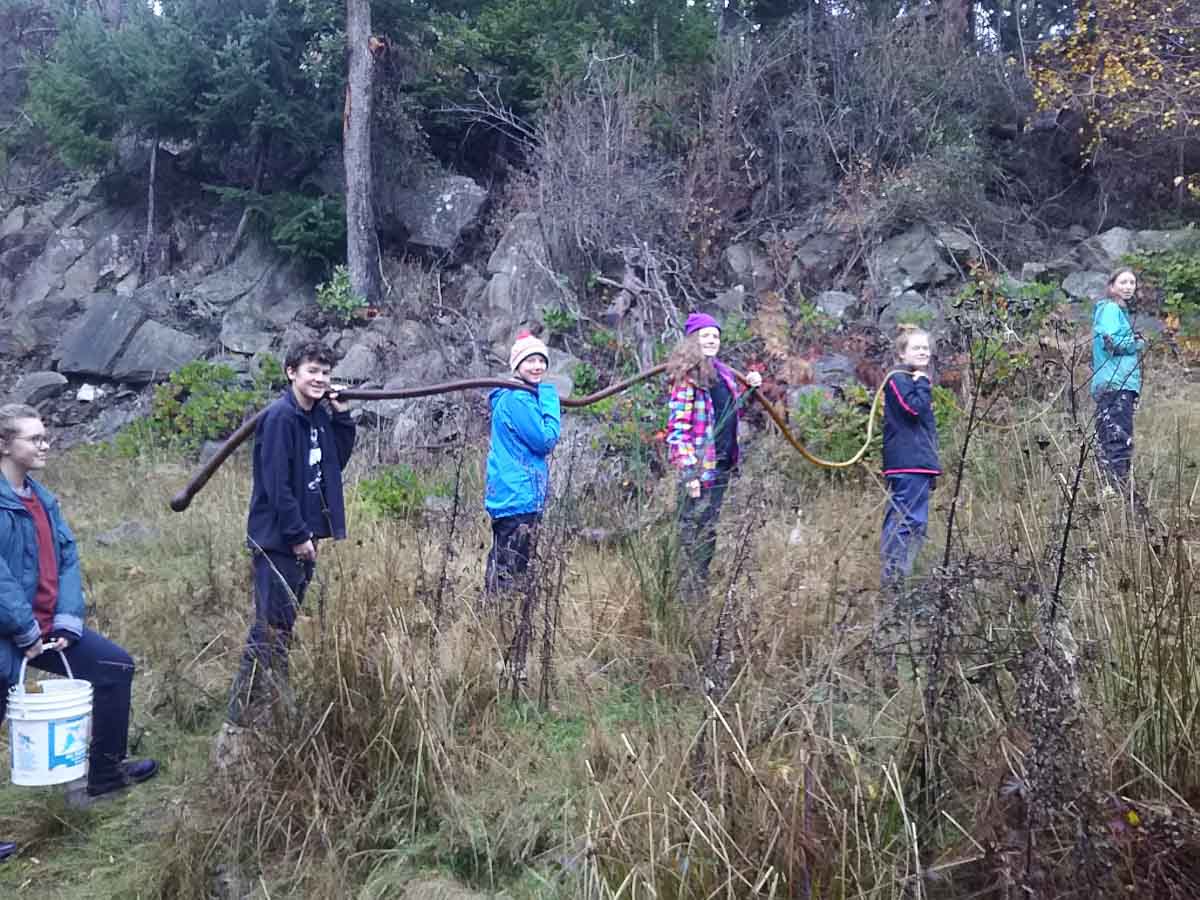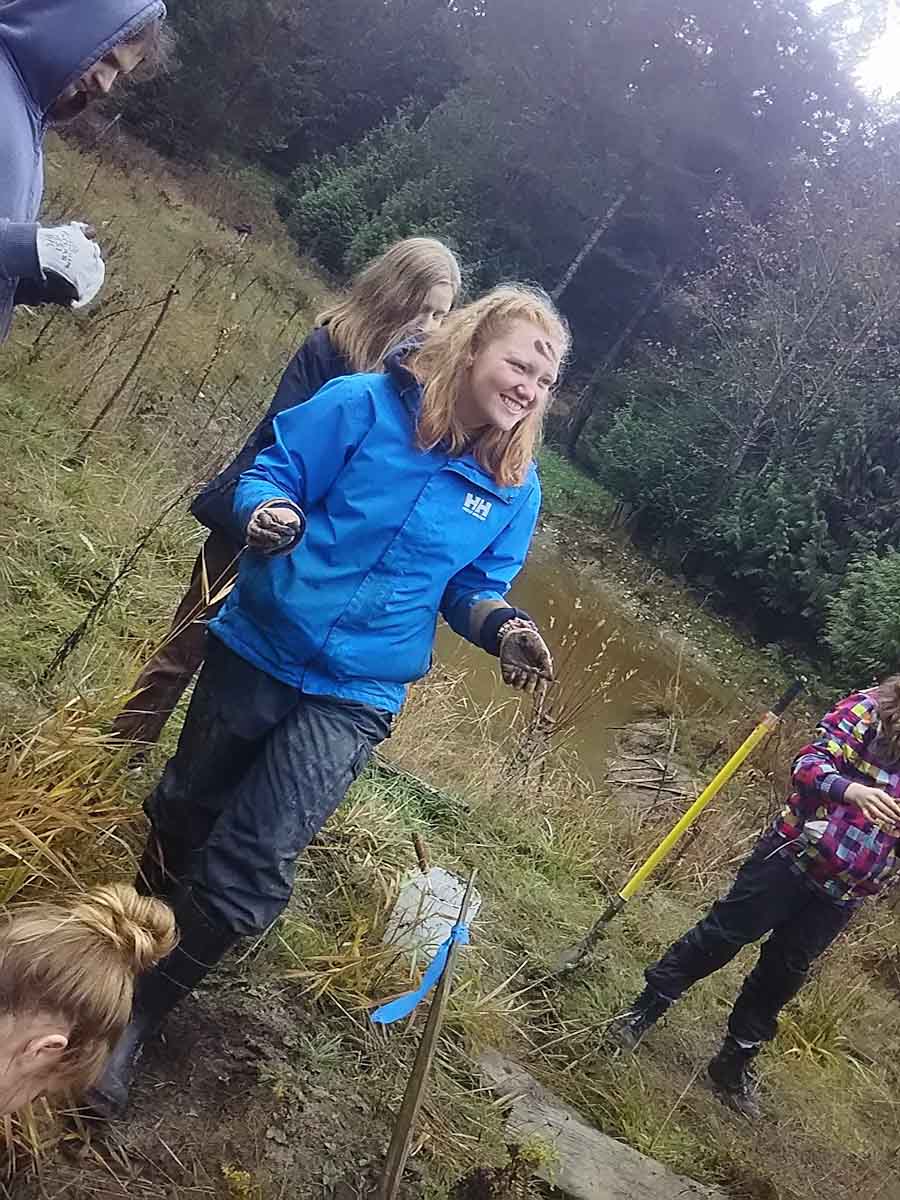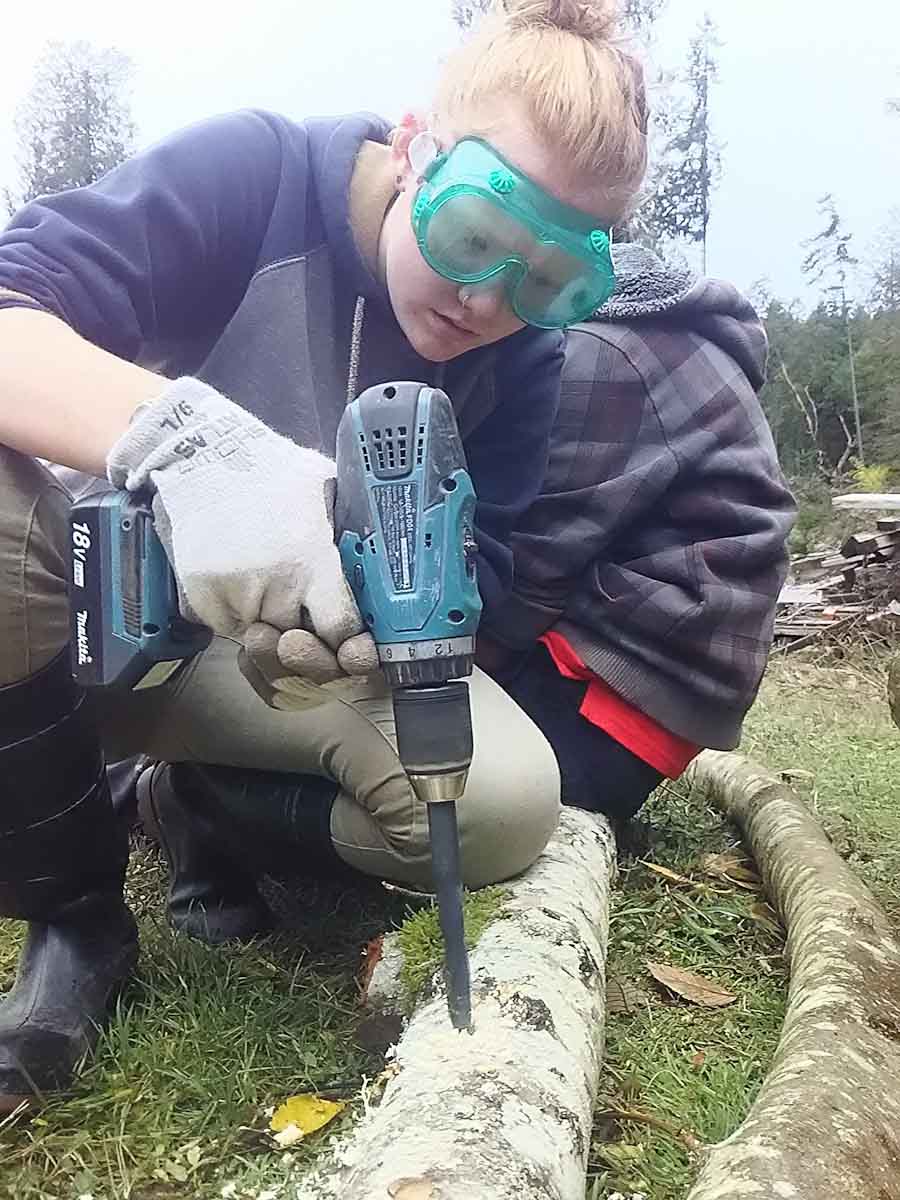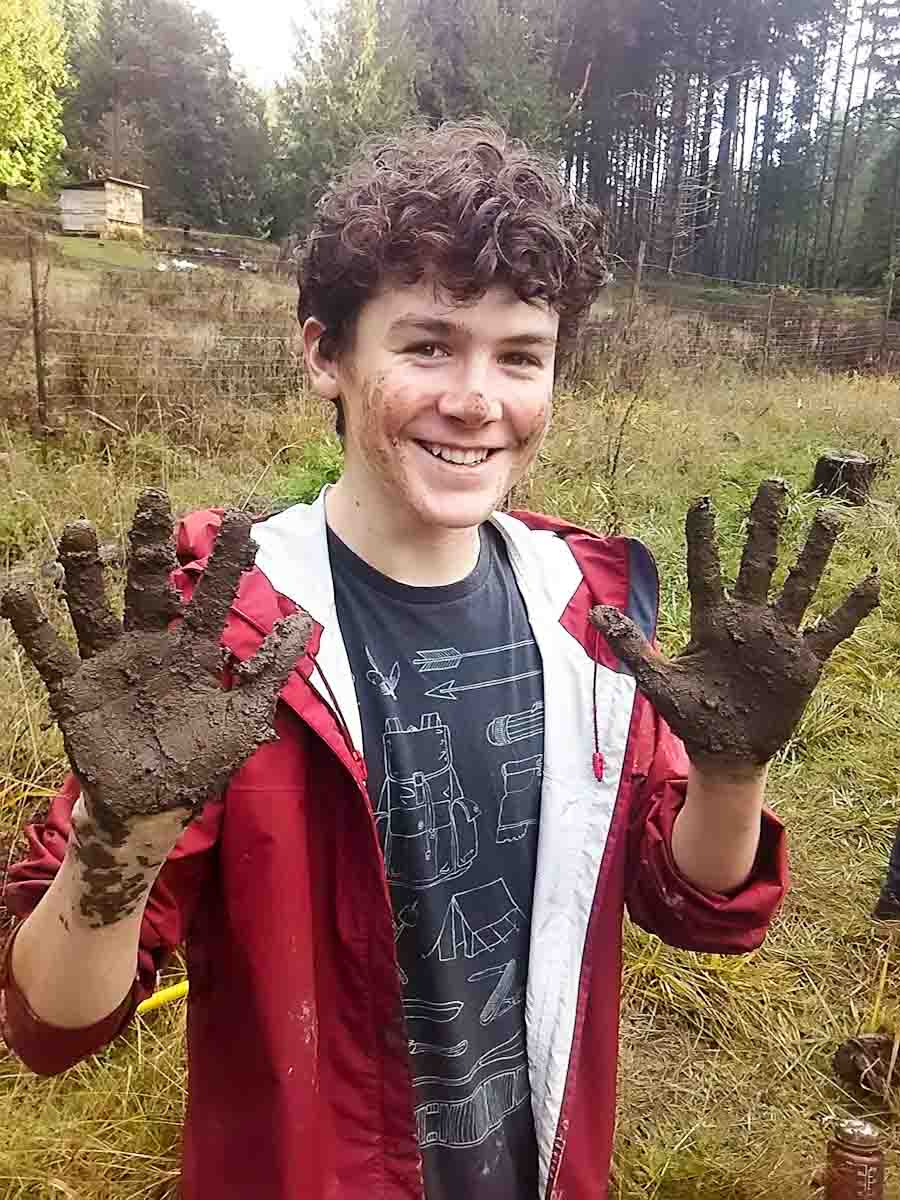Last week, students from the Saturna Ecological Education Centre took part in our brand-new Future of Food Field School. We took a moment to ask education coordinator Reed Osler what the program is all about.
(Photos by Yucco Takeda)
Reed, what is important about the Future of Food field school?
Well, the goal is to learn about sustainable agriculture and the idea of food producing ecosystems. That’s what our forest garden is— a form of agriculture that mimics a forest, with healthy soil and layers of living things.
We start in the forest and do a teaching train on forest ecology—the students work in stations, learning a concept then teaching each other about it. Once we’ve had a look at how a healthy forest works, we go to the forest garden, and they draw parallels between the woods and the garden—to show how sustainable agriculture can be done.
What would I have seen, if I dropped in to that program in progress?
Well, you might have seen us playing a game about mushrooms—about mycorrhizal fungus, which play a huge role in the forest soil. And after that you would have seen us drilling into red alder logs and inoculating them with shiitake fungus spawn, and sealing the holes with bee’s wax. Hopefully we’ll get shiitake mushrooms next year.
You would have seen us look at the soil quite a bit: all the different components of the soil, doing soil activities, discovering what role it plays in the ecosystem. We did soil hand texturing, trying different tests to see how much clay or sand is in the soil. You might have seen us working with compost, learning about the importance of healthy bacteria in the soil. We made compost tea in a huge brewer, and used cedar and fern fronds to disperse it on the soil, as it’s really concentrated. We also made lasagna garden beds, where you layer green materials and seaweed with leaves and cardboard. The layers break down and create nutritious soil.
What do the students do in the evening?
The group spends time at the Learning Centre—it’s all theirs for the evening. They cook supper in the kitchen, they eat together, they spend time with their teacher going over what they did during the day, and they just hang out together. Most groups have a campfire, when there are no fire bans in place.
How to teachers get started in booking a trip to Galiano Island for a program like this?
Well, they can book the program online, or give us a call. And if their school has financial need, they should definitely look into applying for a bursary.
Funding for this program was generously provided by TD Friends of the Environment Foundation and The Hamber Foundation.





